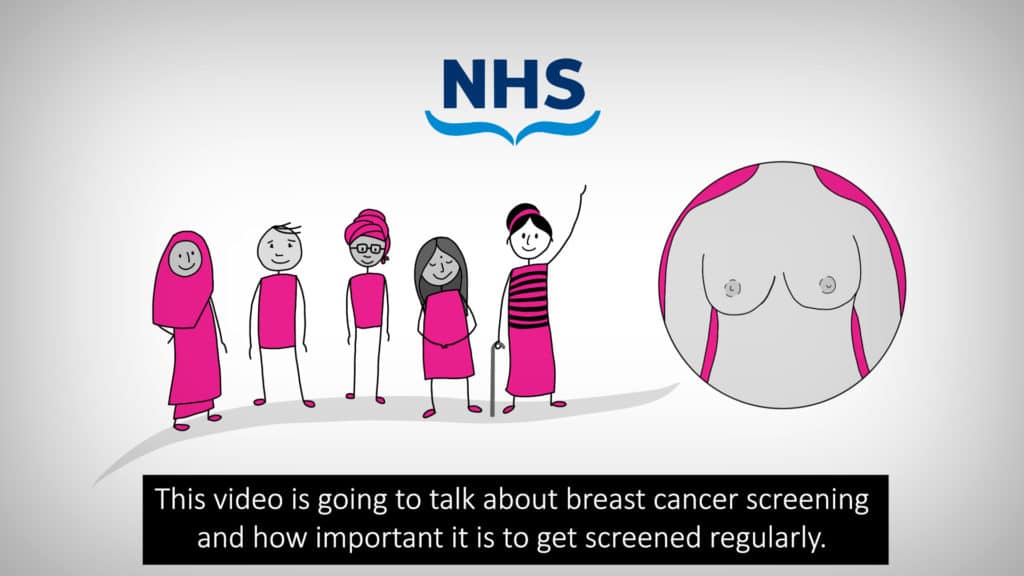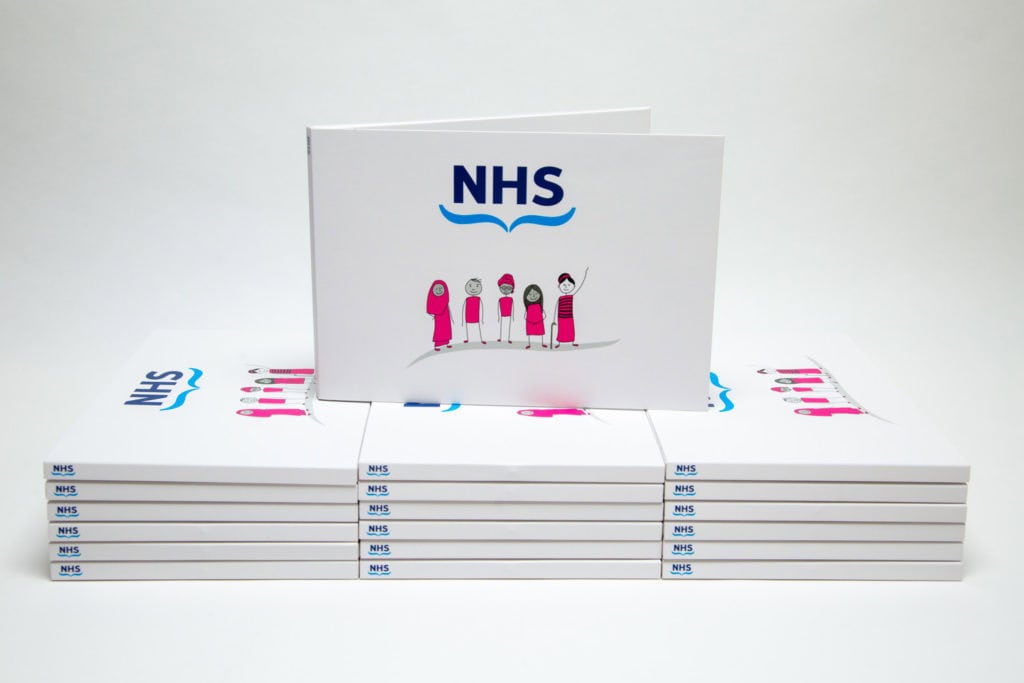Cancer Screening Awareness for Minority Groups
I was delighted to work on an important project for the NHS which aimed to raise awareness of the importance of getting screened for cancer. It was also great to be able to work with illustrator Clare Mills again.
All 28 videos are now available to watch on the NHS Inform website and NHS GGGC YouTube channel. They have had tens of thousands of views so far.
Project Category
Animation
Client
NHS Greater Glasgow and Clyde
Location
Glasgow, Scotland
Date
December 2020
Timescale
6 months
Target Duration
4 x 2:00mins
Languages
7
Script Writing
Yes
Awards
UK Public Health Register – Digital Innovation
Winner
NHS Scotland 2022 – Health of the Population
Finalist (Top 3)
Nic's expertise in the design, the animations and the script, was integral to the process. Nic also suggested using video brochures as part of the work and they proved to be really innovative, and we have had lots of positive comments regarding these. The video brochures also helped us address barriers which we didn't initially anticipate. I have since recommended Mango Multimedia to other NHS Board colleagues.
Kenna Campbell, Health Improvement Senior, North West Health Improvement Team, Glasgow City Health & Social Care Partnership
Brief/Objective
Amongst non-English speaking communities in Glasgow it has traditionally been very difficult to communicate messages about the importance of regular cancer screening. Therefore a series of animated videos was commissioned which would be aimed at minority and disadvantaged groups in Glasgow.
These videos would seek to educate the viewer using clear and straightforward language, while also helping to explain the reasons for getting screened and demystify the process.
The requirement was for 4 animated videos:
- Breast Cancer Screening
- Cervical Cancer Screening
- Bowel Cancer Screening
- HPV Awareness
Each video was to be supplied with captions in English and a voiceover in each of 7 different languages:
- Arabic
- Urdu
- Mandarin
- Punjabi
- Roma
- English
- British Sign Language (BSL)
It was also critical that viewers were made aware of what effect COVID restrictions might have on their screening appointments.
Challenges
The challenges on this project were not insignificant and included:
- Not able to use words/language in the animations
- They needed to discuss potentially sensitive topics
- The creation of appropriate illustrations
- The multiple languages had different durations
- As Roma is not a written language, finding a Roma translation wasn’t easy
- In-person meetings couldn’t take place due to COVID restrictions
- There were several stakeholders/partners

Solution
As the script for each of the four videos would be translated into multiple languages, that required that the absolute minimum of English text was used in the animations. This would enable the main narrative of the video to be supplied by the translated voiceovers and not rely on the illustrations in the animations.
SENSITIVE CONTENT
The subjects that were going to be covered in the videos were of a sensitive and personal nature and thought needed to be given to how each community would react to such topics being discussed.
In order to help with feedback and ensure accurate information was used throughout the production process, relevant charities and organisations were consulted.
- West of Scotland Breast Screening Service
- Bowel Cancer UK
- Jo’s Trust
- The Space
LANGUAGES
Different languages have significant variations in how long it takes to say each part of the script. As it was out with the budget of this project to create bespoke animations for each of the languages, it was decided that the same animations would be used for each language and the voiceover matched as best as it could be with the animation.
Getting the community involved was important to the project which resulted in volunteers being used to record some of the voiceovers.
TRANSLATIONS
While most of the translations from the English scripts were quite straightforward, translating the Roma language presented a particular challenge as it is not a language that is written down, only spoken. Thankfully the projects partners at The Space were able to really help out.
Deliverables
A total of 28 video files were delivered at the end of the project. Each of the 4 videos was delivered in each of the 7 languages.
In addition to the digital video files, a total of 250 video brochures were delivered to NHS Greater Glasgow and Clyde and NHS Lanarkshire.
Video Brochures


During early discussions it was identified that some of the communities may have limited access to the internet or that suitable devices to watch the videos may be controlled by someone not in the target audience.
I suggested that the videos be distributed on video brochures. These portable devices don’t need access to the internet and play automatically when opened.
Video brochures in all of the available languages have been taken to doctors surgeries and community groups. This means that many more people have been able to benefit from the messages of the videos, while in a safe environment.
We initially approached Nic for animations for use on social media, but he presented us with the idea of also using video brochures. They have been very popular as people can view the animations, with or without sound, and support people who experience cultural issues on such topics, with the opportunity to access the information in privacy, if required using subtitles. Nic was very experienced in supporting community members to be confident to support the recording of local voice overs for the video.
Kenna Campbell, Health Improvement Senior, North West Health Improvement Team, Glasgow City Health & Social Care Partnership
Feedback
People who attended cancer information sessions said:
I thought the videos were great, really easy to understand. Their process was excellent when you think about how they engaged with local communities to check meanings of words and which words they would generally use. It’s too easy to get a basic script and get that translated into a language and be satisfied with that; to actually involve local communities means they’ve got some ownership of it and it’s something they can be proud of and hopefully have a video they’ll be able to share.
I think the format is great. The animations are in the most common spoken languages in Glasgow, but even without the voiceovers you would almost get it with the animations. It looks fun. It’s not just a boring bit of text to read. It’s just a nice wee thing to watch.
Illustrations
The illustrations that were converted into the animations were drawn by Listen Think Draw
